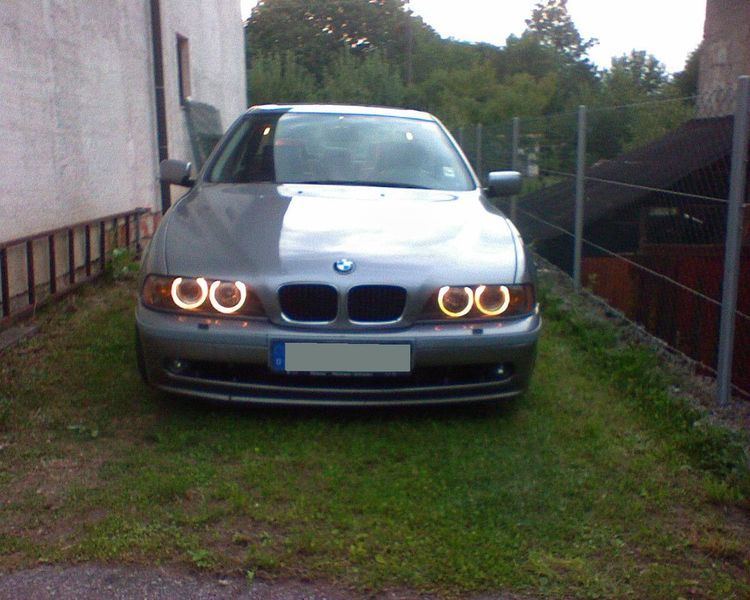 | ||
Halo headlights (also known as Halos, Corona Rings, and referred to as Angel Eyes because of the distinctive arrangement of lights placed in a circular pattern) are automotive front lighting units with luminous rings inside the headlight assembly. Introduced in 2000 by BMW, halos were originally typical of this automaker's cars but soon became a popular customization option to enhance any vehicle's front end appearance.
Contents
History
Since the time when early headlight technology was represented by an acetylene lamp with a reflecting mirror, headlights have evolved into the high-tech units that both create high-impact illumination and provide a way to customize the look of a vehicle.
Although composite headlight assemblies became widely used only in the 1980s, their bulky construction which utilized parabolic reflectors didn't allow for the freedom to create intricate designs. With an increasing use of less cumbersome projector bulbs in the 2000s, automakers could implement innovative headlamp designs, including halo rings.
Halo headlights were originally designed and first used by BMW on the 2001 5-Series, a luxury sports sedan which soon entered Car and Driver's "10Best list".This was a breakthrough: halo headlights not only served as daytime running lights, but also created a revolutionary look that gave a sharp stance to a vehicle's front. BMW's inspiration behind their "Angel Eyes", had originally come as an homage to earlier E-series vehicles. The halo lights had been based on typical BMW headlight design, such as that of the cult classic E30 3-series.
The concept for halo headlights was called the Corona Rings by BMW. Through constant technology improvement, halo headlights could serve as daytime running lights (DRL) and also as evening city lights. Originally powering their halo headlights by halogen bulbs that used a fiber optic system to transmit the light along the ring channel, BMW soon replaced this source of illumination with super-bright energy-saving LEDs that powered corona light rings.
Modern BMW-designed halo rings are part of the BMW bi-xenon headlights. A signature element that served to distinguish BMW vehicles on the road, halo headlights were soon borrowed by other automakers. For instance, the Chevrolet Camaro and the Chevrolet Impala were equipped with halo-ring headlights.
Commenting on the new 2014 Chevy Impala design that utilized LED halo rings, Steve McCabe, the lead creative designer for Impala, said: “Impala’s new-look headlamps required a significant amount of attention to detail... As a result they help give the car a premium appearance.”
Types
According to a source of illumination, there are several types of halo rings:
Brands
Halo headlights have entered the automotive aftermarket industry, allowing almost every car owner to replace the factory-installed headlights with the distinctive “angel eyes”. Among aftermarket manufacturers that provide halo headlights are Spyder (manufactures CCFL Halo Projector headlights with direct factory replacement housings), Lux Angel Eyes (specializes in producing plug and play LED halo headlights for BMW cars), Oracle Lighting (offers plasma halo rings, waterproof halos that can be installed on the outside of a car as well as halo kits for a variety of vehicles), Anzo (manufactures performance lighting products that meet SAE and DOT regulations and are compliant to FMVSS-108 – Federal Motor Vehicle Safety Standard 108), and others.
